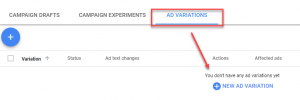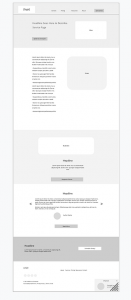Social media sites are some of the most-used in the world, with Twitter sitting firmly in the top five. According to Twitter, there are 288 million active Twitter users, and more than 500 million tweets are sent every day. Is your business using this popular communication channel to support your customers?
Here are 4 ways to offer great customer service on Twitter.
1. Be fast.
Studies have found that 70% of customer service complaints on Twitter are never answered. If and when tweets do get answered, the average response time is 4.6 hours, by which time most customers have had to figure things out themselves. In fact, over 40% of customers expect a response within one hour–any longer and you could risk losing a customer for good.
Over one million people view tweets about customer service each week, and about 80% of those tweets are negative. If a negative tweet stays out there without response, it can create a negative perception of your company. You can’t delete a negative tweet, but you can respond to it ASAP and show that you care about what customers are saying. Try and answer with as much depth as possible, but at the very least, answer quickly and then follow up.
Depending on your company’s size, it might not be possible to answer a customer tweet immediately. One way to make sure complaints don’t go unanswered is to set up mobile or email notifications instead of having a tab open on your computer and trying to keep up. If you respond to customer complaints in under an hour, you’re meeting their minimum expectations. If you respond within minutes, you’ll be golden. Plus, a quick tweet back can generate more business—71% of customers are more likely to recommend a brand that provides quick and helpful answers on social media.
2. Train your customer service team to manage social
Social may be one of the most popular channels out there, but for some reason, 60% of companies don’t formally support social customer care. Of those companies, 68% said one of their biggest challenges was observing and coaching agents. Companies need to face this challenge head on and set aside part of their budget to training service agents on social best practices. They should come away with an understanding of how to answer questions in a way that’s consistent to the brand and stays within the character limits.
On Twitter, service agents should respond with a question to increase responsiveness and encourage conversation. (Agents can make things more personal by adding their initials or name). If a customer isn’t able to solve a problem the first time, follow up with an alternative method. To decrease response time, customer service agents should make a list of common customer questions and answers. If possible, have agents from different time zones monitoring the company Twitter account to make sure customers always get a response. How you respond and how many people are on your social response team will ultimately vary by organization.
One of the best ways to manage customer complaints or tweets is with a dedicated service account like @nikesupport or@HPsupport. A study by Simply Measured found that 99% of brands are on Twitter, and 30% of them have a dedicated customer service handle. This makes sense, since most Twitter accounts are used for marketing and awareness, but not all businesses may be able to manage two accounts. If you do have a second account, odds are most people won’t tweet to this account, so market it on your main Twitter handle to increase awareness. In addition, you should monitor tweets to your main account within your social media dashboard. Even if you don’t have a second account, having a team trained to handle social customer input will go a long way for your business.
3. Be proactive
This might sound similar to “be fast,” but it’s not quite the same. Whether or not you have a dedicated service account, you need to make sure your Twitter feed has some customer service substance. You don’t just want it to be a bunch of replies to customers—you want content that helps people. If you see a question pop up several times, consider creating some content or an FAQ page that addresses that question that customers can refer to. Even better, start a conversation on Twitter and ask people what they want to know about your product—that way you’ll have extremely helpful content before a problem even starts.
But let’s say a problem does start. If your site goes down in the Denver metro area or a flight from Orlando is delayed, address the problem before you get a bunch of angry tweets. (Social monitoring tip: if you know service will be down in a particular city, set up a stream to monitor tweets mentioning your company within a certain mile radius). By heading off the problem before things get ugly, you’ll be able to demonstrate you can quickly handle any customer service troubles that come your way. Of course, customers might not always see that tweet, so don’t be afraid to retweet it several times while the problem is getting resolved.
4. Direct them to another channel
Twitter is just one weapon in your support arsenal, and it’s not always going to be the best way to deal with customers. Sure, you could always answer your customer’s question in-depth with a series of 10 back-to-back tweets, but that’s not a great customer experience. If things are going to get really technical, really personal (like with credit card information), or really emotional, consider moving the conversation offline or onto another channel. Conversing with an angry customer in a public forum like Twitter only increases the chances of negative tweets being seen.
The best way to do this is to integrate channels so customers don’t have to start their conversation all over again (which they don’t really like). Using a platform that monitors traditional support channels like voice and email, as well as alternative channels like social and text messaging, is the best way to go. This way, agents can maintain the context of the conversation and deliver more personalized support instead of starting things all over again.
At OneReach, we recommend offering customers the option to text to transfer out of a public space. If they need to exchange personal information or are getting frustrated on social media, text messaging is an ideal option. And since texting and tweeting are so similar (character constraints, mobile devices, etc.), customers have an option that doesn’t require them to make a dramatic channel change. Your support team can ask customers to text a toll-free number and then text their Twitter handle, which customer service agents can refer to in order to respond to specific questions. With 86% of Twitter users on mobile and 23 billion texts being exchanged each day (compared to 500 million tweets), SMS is a great complement to Twitter customer service.
Conclusion
More often than not, people will tweet about bad service experiences, but social customer service is a chance for your brand to really shine. A recent study found that when a company responded to a customer complaint, nearly half of customers were pleased, and 22% posted a positive comment afterwards. If your company provides great customer service on Twitter, potential customers will take note and think better of your company.
Do that enough times and you’ll be providing customer service that will make people take notice (and in a positive way).
To learn more about why customers want to use texting for customer service, download the 2014 Harris Report here.
This post originally appeared on Desk.com and has been republished with permission.
(259)
Report Post




